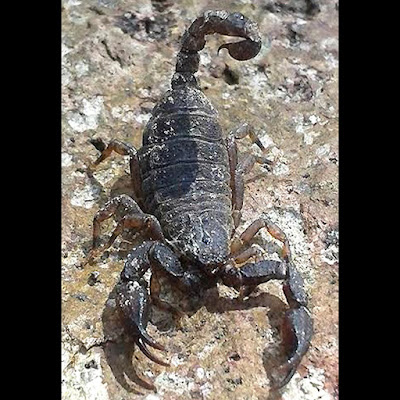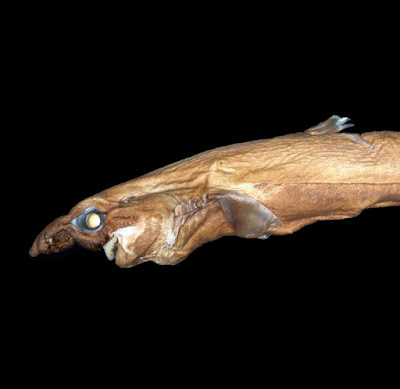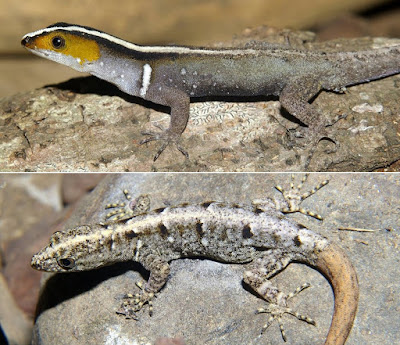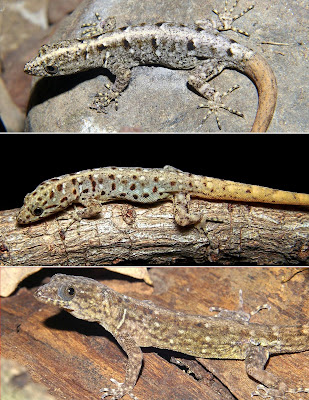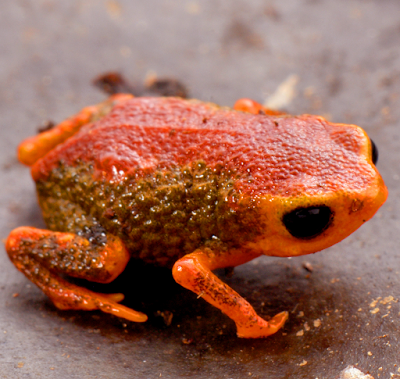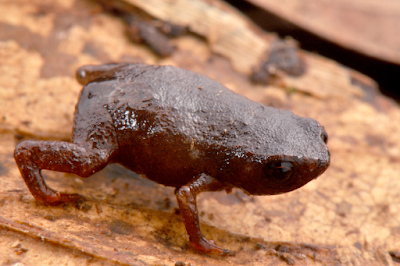[Most Recent Entries] [Calendar View]
Thursday, July 27th, 2017
| Time | Event | ||||||
| 4:25a | [Arachnida • 2017] Megacormus xichu • A New Species of Megacormus (Scorpiones, Euscorpiidae) from An Oak-Pine Forest in Guanajuato, México with An Identification Key to the Species in the Genus Abstract The fifth species of the genus, Megacormus xichu sp. nov., is described and compared to the other species. An identification key to these species as well as a distributional map with localities taken from the literature are provided. Keywords: Scorpiones, Scorpion, Xichú, distributional map, literature, Charco Azul Edmundo González-Santillán, Juan Manuel González-Ruiz and Luis A. Escobedo-Morales. 2017. A New Species of Megacormus (Scorpiones, Euscorpiidae) from An Oak-Pine Forest in Guanajuato, México with An Identification Key to the Species in the Genus. Zootaxa. 4299(2); 221–237. DOI: 10.11646/zootaxa.4299.2.3 | ||||||
| 8:02a | [Ichthyology • 2017] Etmopterus lailae • A New Lanternshark (Squaliformes: Etmopteridae) from the Northwestern Hawaiian Islands
Abstract A new species of lanternshark, Etmopterus lailae (Squaliformes: Etmopteridae), is described from the Northwestern Hawaiian Islands, in the central North Pacific Ocean. The new species resembles other members of the “Etmopterus lucifer” clade in having linear rows of dermal denticles, and most closely resembles E. lucifer from Japan. The new species occurs along insular slopes around seamounts at depths between 314–384 m. It can be distinguished from other members of the E. lucifer clade by a combination of characteristics, including a longer anterior flank marking branch, arrangement of dermal denticles on the ventral snout surface and body, flank and caudal markings, and meristic counts including number of spiral valve turns, and precaudal vertebrate. A key to species of the Etmopterus lucifer-clade is included. Keywords: Pisces, Chondrichthyes, elasmobranch, Etmopterus lucifer clade, new species, central North Pacific Ocean
Etmopterus lailae, new species Laila’s Lanternshark Distribution. The new species presently is known only from the Koko and South Kanmu seamounts, Northwestern Hawaiian Islands, and at a depth range of 314–384 m. Etymology. The new species is named after Laila Mostello-Wetherbee, shark enthusiast and daughter of coauthor Brad Wetherbee. The proposed common name is Laila’s Lanternshark. David A. Ebert, Yannis P. Papastamatiou, Stephen M. Kajiura and Bradley M. Wetherbee. 2017. Etmopterus lailae sp. nov., A New Lanternshark (Squaliformes: Etmopteridae) from the Northwestern Hawaiian Islands. Zootaxa. 4237(2); 371-382. DOI: 10.11646/zootaxa.4237.2.10 ResearchGate.net/publication/314103176_Etmopterus_lailae_sp_nov_a_new_lanternshark_Squaliformes_ New shark species glows in the dark, weighs two pounds and has a huge nose phy.so/420267222 via @physorg_com | ||||||
| 4:06p | [Herpetology • 2017] Gonatodes rayito • A New Species of Gonatodes (Squamata: Sphaerodactylidae) from the western versant of the Cordillera de Mérida, Venezuela Abstract Gonatodes rayito sp. nov. is described from the western versant of the Cordillera de Mérida, Venezuela. Like most species of Gonatodes the new species is sexually dichromatic and is one of only a few in the genus in which individuals have a conspicuous, pale middorsal stripe. The new species is similar to, and has been confused in the past with, G. petersi and G. vittatus. It differs from both species in several aspects of color pattern, and also from G. vittatus in size and scale counts. The validity of Gonatodes rayito sp. nov. is also strongly supported by a phylogenetic analysis using a fragment of the ornithine decarboxylase nuclear gene. Keywords: Gonatodes rayito sp. nov., Gonatodes petersi, Gonatodes vittatus, lizard, gecko, Gekkota, taxonomy, Reptilia, Squamata, Sphaerodactylidae
Gonatodes rayito sp. nov. Gonatodes petersi Donoso-Barros: Esqueda (2004) [two specimens, ULABG 4726, 4741, from near Santa Apolonia, Mérida, Venezuela] Gonatodes vittatus (Lichtenstein): Rivas et al. (2006) [in part, specimens from Mérida] Gonatodes v. vittatus (Lichtenstein): Rivero-Blanco (1967) [specimens of G. v. vittatus reported in sympatry with G. albogularis in “Sur del Lago” are likely G. rayito based on locality. The two live specimens of G. v. vittatus pictured from “La Azulita” are also G. rayito] Etymology. The specific name is the Spanish word meaning “little lightning” or “little ray”, a name informally coined by the late naturalist Dr. Richard Schargel for individuals of this species as well as of G. petersi and G. vittatus. The name refers to the notion that, because males of this group of species have a conspicuous middorsal white stripe, when they flee they resemble a “little white lightning.” Richard kept many species of Gonatodes in captivity and also helped support the first author on his research on the genus. Walter E. Schargel, Gilson A. Rivas, Juan E. García-Pérez, Carlos Rivero-Blanco, Paul T. Chippindale and Matthew K. Fujita. 2017. A New Species of Gonatodes (Squamata: Sphaerodactylidae) from the western versant of the Cordillera de Mérida, Venezuela. Zootaxa. 4291(3); 549–562. DOI: 10.11646/zootaxa.4291.3.7 Resumen: Gonatodes rayito sp. nov. es descrita de la vertiente oeste de la Cordillera de Mérida, Venezuela. Al igual que la mayoría de las especies de Gonatodes, la nueva especie es sexualmente dicromática y es una de las pocas en el género en que los individuos poseen una línea vertebral clara conspicua. La nueva especie es similar a, y ha sido confundida en el pasado con, G. petersi y G. vittatus. Se diferencia de ambas especies en varios aspectos en el patrón de la coloración, y también de G. vittatus en el tamaño y en conteo de escamas. La validez de Gonatodes rayito sp. nov. es también corroborada por un análisis filogenético en el que se usó un fragmento de un gen nuclear (ODC, por sus siglas en inglés). | ||||||
| 4:31p | [Herpetology • 2017] Brachycephalus coloratus & B. curupira • Two New Species of the Brachycephalus pernix Group (Anura: Brachycephalidae) from the State of Paraná, southern Brazil
Abstract We describe two new species of miniaturized toadlet in the Brachycephalus pernix group of Brachycephalus (Anura: Brachycephalidae) from the Atlantic Forest of the state of Paraná, southern Brazil. The first new species is distinguished from all congeners by the pale red coloration from the head to the pelvic region, with sides of the body and thighs dorsally yellowish green. It is known only from the type locality in a cloud forest at altitudes ranging between 1,144–1,228 m a.s.l. The second species, although more closely related to B. izecksohni, is morphologically similar to B. brunneus in its overall brown coloration, but distinct from that species in the color of the iris (black with conspicuous golden spots, instead of entirely black). It was found on three mountains, at altitudes between 1,095–1,320 m a.s.l., and in vegetation types including cloud forest, montane forest, and secondary forest. The two new species exhibit neither vertebral fusions nor osteoderms, but one has both a distinct neopalatine and well-developed odontoids on the maxillae. We discuss the conservation status of both species.
Brachycephalus coloratus sp. nov Etymology. The specific epithet is from the Latin coloratus (“colored”, “variegated”) in reference to the unique combination of colors found in the species.
Brachycephalus curupira sp. nov. Etymology. The specific epithet is a noun in apposition and refers to the homonymous mythical character in Brazilian folklore whose aim is to protect the forests. Although usually portrayed as a red-headed boy with feet pointing backwards, the curupira becomes invisible and produces sounds that confuse those walking in his forests. This confusion is a fitting description of our situation while trying to locate calling males of this elusive species (see Remarks below). Luiz F. Ribeiro, David C. Blackburn, Edward L. Stanley, Marcio R. Pie and Marcos R. Bornschein. 2017. Two New Species of the Brachycephalus pernix group (Anura: Brachycephalidae) from the State of Paraná, southern Brazil. PeerJ. 5:e3603. DOI: 10.7717/peerj.3603 |
| << Previous Day |
2017/07/27 [Calendar] |
Next Day >> |
